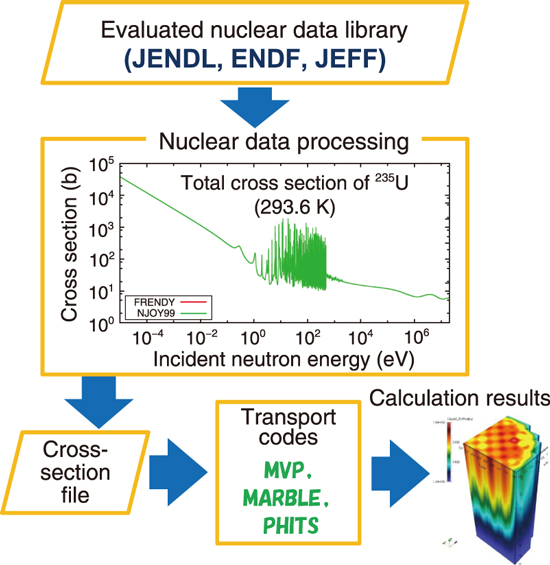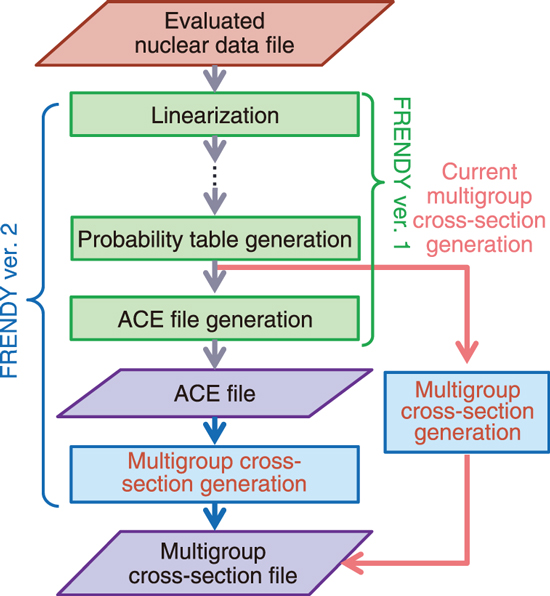
Fig.4-4 Overview of nuclear data processing

Fig.4-5 Computational flow of multigroup cross-section file generation in FRENDY
Particle transport calculation codes are used for various purposes such as reactor analysis and shielding calculation. The transport calculation codes require basic physical data such as reaction probabilities between neutrons and nuclei. The database of these basic physical data is called the evaluated nuclear data library. The JAEA has developed transport calculation codes such as MVP, MARBLE, and PHITS and an evaluated nuclear data library JENDL.
Transport calculation codes cannot handle evaluated nuclear data libraries directly. A process called nuclear data processing is required to convert these data into a cross section file format that can be handled by each transport calculation code. This process is illustrated in Fig.4-4. The nuclear data processing code is not just a converter. It has various data processing functions, as shown in Fig.4-5. Because the development of nuclear data processing codes requires not only knowledge of evaluated nuclear data libraries but also knowledge of each transport calculation code, only a few nuclear data processing codes have been developed.
The JAEA developed a nuclear data processing code FRENDY and released its first version, FRENDY version 1, as open-source software in March 2019. This code is widely used not only in Japan but also worldwide.
We have developed various functions after the release of FRENDY version 1. An example of the functions is the multigroup cross-section generation function, which is depicted in Fig.4-5. The development of the multigroup cross-section generation function for the multigroup transport calculation code, which is used for designing nuclear reactors and accelerators, was strongly desired by the industrial community. The development of the multigroup cross-section generation function received high praise; including a technical award from the Atomic Energy Society of Japan. These functions were compiled and released as the second version of FRENDY, called FRENDY version 2, in January 2022.
FRENDY can generate a multigroup cross-section file from an ACE file, which is the cross-section file format used in the continuous energy Monte Carlo calculation code, as shown in Fig.4-5. ACE files are widely used globally, and they can be downloaded from the websites of many institutions. FRENDY can easily generate multigroup cross-section files from the existing ACE files.
We implemented new features in FRENDY, such as the resonance interference effect between different nuclides. The use of these features will add to the importance of FRENDY.
(Kenichi Tada)